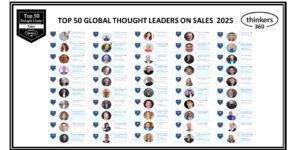Connected, empowered consumers—also known as of Generation C—have come to expect businesses to know them, to understand them, and to deliver what they want, where, when and how they want it.
I recently published an ebook with IBM, The Connected Consumer and the New Decision-Making Cycle, that explores the new decision making cycle of connected customers. You can download it for free here. Thanks IBM!
The goal of the ebook, and also this post, is to introduce readers to the differences that exist between touch points that connected customers rely upon to make decisions or inform those of others and those in which many organizations are investing. The idea of course is to discover new ways to realign investments while improving customer experiences and relationships. Even with this information however, it takes champions to make the case internally and bring together disparate groups that control various aspects of customer engagement today.
Together, we can learn and share, how businesses can adapt and lead the future of customer experience.
They demand superior service, competitive prices, and quick delivery. And when they don’t get what they want, their friends, followers and fans hear all about it.
How can you effectively communicate with this audience? You can start by realizing that we’re all part of Generation C (it’s not an age group, it’s a digital lifestyle), and in order to make the link, you need to think like a connected marketer.
Here are the four steps I view as essential when it comes to engaging with this elusive audience.
1. Don’t Be Shy: Getting Comfortable with Digital Exhibitionists
Members of Generation C are virtual attention-seekers. Everything they do, think and experience is shared through multiple networks. Breakfast is blogged about, breakups are broadcast, and if there aren’t any pictures, it didn’t happen. The good news? You no longer have to guess which messages will be relevant to your audiences. You can study conversations and connections and use up-to-the-minute insights to inform global, national, and hyper-local campaigns that resonate with customers.
2. One to One: Understanding Each Unique Customer
Once you’ve captured the attention of your customers and gained their interest—even kindled their desire—how do you move them to take action? By tapping into the wealth of insight that your customers give you during every step of their journey. Rather than forcing everyone through the same chute, your marketing, sales, and service should act as trusted guides, helping each customer along an individual path.
3. Shopping is Social: Finding Friends and Gaining Trust
Everyone is talking about your brand behind your back. That is, unless you’re tuning in to the right networks. Your potential customers are asking questions in social networks, comparing prices using mobile apps, reading real-time reviews, and watching videos with product information. They might decide to buy—or not to buy—without ever interacting with your brand. But you can’t just force your way in to the conversation.
4. The Future Funnel: Developing a New, Dynamic Customer Journey
By aligning your marketing and service strategies with the needs of Generation C, you can become a trusted partner to your customers as they shop and buy. And when every channel and message lines up with precisely what they’re looking for, exactly when they need it, you’ll gain more than loyalty and trust. You’ll transform your marketing strategy—as well the way you do business.
Connect with me: Twitter | LinkedIn | Facebook | Google+ |Youtube | Instagram
Photo credit: MJTH / Shutterstock





I’m sure some people reading this have initially thrown up
their hands in horror – yet another group for us to interact with! But in many
cases the same underlying principles you use to deal with all your customers
apply to Generation C. You need to show empathy with their thoughts and wishes,
deliver the service and products they are looking for and go above and beyond
their requirements. As you say Brian, the first step is understanding them and
the language they use, and your post has some really useful starting points.
More on the changing generations in the Eptica blog at http://eptica.wordpress.com/2013/11/22/the-rise-of-generation-y-and-what-it-means-to-the-customer-experience/